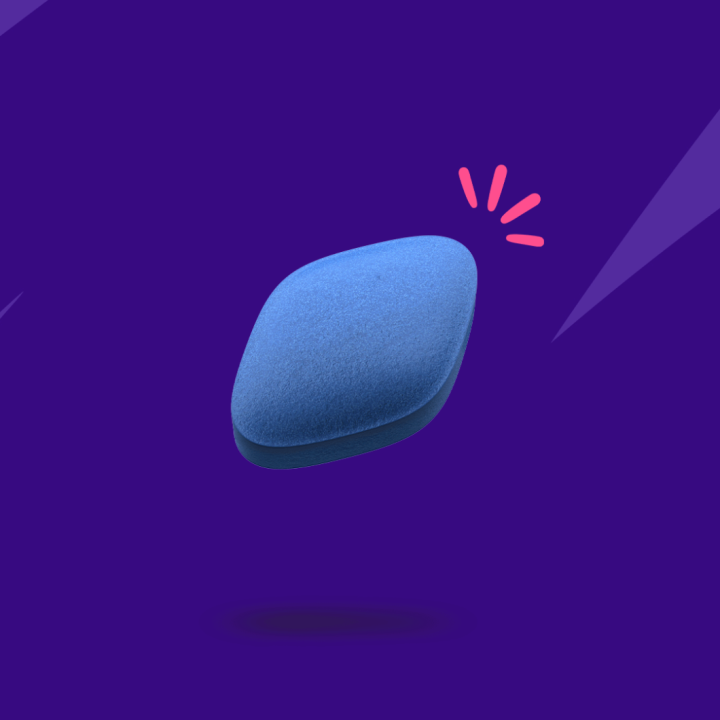
Pelvic Floor Dysfunction (PFD) in Bangladesh: Symptoms, Causes, Diagnosis & Treatment and Prevention
The pelvic floor is like the hidden foundation of your body — unnoticed until something goes wrong. These muscles quietly support everyday functions such as urination, bowel movements, and sexual health. Yet in Bangladesh, most men rarely think about them until problems start. Much like home plumbing, the pelvic floor works in the background, but when it weakens or becomes overactive, it can cause real trouble.
For men, pelvic floor dysfunction (PFD) may lead to erectile dysfunction (ED), premature ejaculation, delayed orgasm, urinary incontinence, and chronic pelvic pain. Though often left unspoken due to stigma, these problems are becoming more common in Bangladesh as stress, obesity, and diabetes rise.
What Is Pelvic Floor Dysfunction?
The pelvic floor is a group of muscles and connective tissue stretched across the base of the pelvis, forming a supportive “hammock” for vital organs. These muscles:
- Support the bladder, intestines, and reproductive system
- Control urination and bowel movements
- Play a key role in sexual function — from erections to ejaculation
Pelvic floor dysfunction happens when these muscles stop working correctly — becoming weak, injured, or overly tight. This can cause leakage, constipation, pain, or sexual difficulties. In Bangladesh, many men dismiss the early signs as stress or aging, but untreated pelvic floor problems may point to more serious health issues.
Why Is the Pelvic Floor Important?
Most men use their pelvic floor muscles daily without noticing. Your pelvic floor at work is the muscles you tighten to stop urinating mid-stream.
A strong, healthy pelvic floor allows for:
- Bladder control without leaks from coughing or lifting
- Better sexual performance with stronger erections and control
- Smooth bowel function without strain
When these muscles weaken or tighten too much, daily life is affected. In Bangladesh, long hours of sitting, low-fiber diets, lack of exercise, and growing rates of diabetes and obesity all add to the risk of pelvic floor dysfunction.
Symptoms of Pelvic Floor Dysfunction
Pelvic floor dysfunction shows up in different ways, often disturbing daily life and sexual health. Common symptoms include:
- Pain in the pelvic area, lower abdomen, or genitals
- Discomfort or pain during or after ejaculation
- Urinary issues — frequent urination, sudden urgency, leakage, or burning sensation
- Bowel problems — constipation, straining, or incomplete emptying
- Sexual difficulties such as erectile dysfunction, premature ejaculation, or painful intercourse
- Muscle tightness or spasms in the pelvic floor, groin, or inner thighs
- Weak or overactive muscle tone
- Trouble sensing or controlling pelvic floor muscles
Pelvic floor problems often affect sexual health. They may cause:
- Premature ejaculation
- Delayed ejaculation
- Retrograde ejaculation occurs when semen flows back into the bladder instead of out
Not every man experiences sexual symptoms. Some struggle more with urinary leakage, others with bowel issues or pelvic pain. But all of these can affect confidence and quality of life. If you notice such problems, it’s best to consult a urologist or men’s health specialist in Bangladesh.
Causes of Pelvic Floor Dysfunction in Men
The causes are not always clear, but certain factors increase the risk. Key contributors include:
- Age, which weakens muscles naturally
- Pelvic trauma or surgery, including prostate procedures
- Prostate conditions, such as enlargement or chronic inflammation
- Obesity, which puts extra pressure on the pelvic muscles
- Diabetes, which damages nerves and reduces strength
- High blood pressure and heart disease
- Sedentary lifestyle, like long hours of sitting in Dhaka traffic or offices
- Chronic constipation and straining, often from low-fiber diets
Because these symptoms often overlap with urinary or digestive problems, only a medical evaluation can confirm pelvic floor dysfunction.
Risk Factors for Pelvic Floor Dysfunction
Pelvic floor dysfunction can affect anyone, but certain factors make men more at risk. The main ones include:
- Obesity, which puts added pressure on pelvic muscles
- Prostate or pelvic surgery, which may weaken or damage support structures
- Smoking, linked to chronic coughing and poor blood circulation
- Heavy lifting, whether from powerlifting, physical work, or frequent straining
Although women are more prone to pelvic floor problems due to pregnancy and childbirth, men are not exempt. In Bangladesh, rising obesity, high smoking rates, and increasing prostate issues among older men are driving up cases of pelvic floor dysfunction.
Diagnosis of Pelvic Floor Dysfunction
If you notice symptoms, the first step is to see a qualified healthcare provider — ideally a urologist, colorectal specialist, or pelvic health physiotherapist. In Bangladesh, not all doctors are familiar with this condition, so seeking an experienced expert is key.
Common Tests
- Physical exam to assess pelvic muscle strength, control, and tenderness
- Cystoscopy, using a small camera to examine the bladder and urethra
- Urodynamic testing to evaluate bladder storage and release
- Anorectal manometry, measuring rectal and sphincter muscle strength
- Electromyography (EMG) to record muscle activity
Additional Tests
- Endoscopy (colonoscopy or sigmoidoscopy) to check the digestive tract
- MRI or CT scans, such as defecography, for detailed pelvic images
You may also be referred to a pelvic floor physiotherapist for a more detailed assessment and a tailored treatment plan if needed.
How to Treat Pelvic Floor Dysfunction
Pelvic floor dysfunction can impact daily life, but several effective treatments are available. Key options include:
- Pelvic floor exercises
- Physical therapy
- Lifestyle changes
- Medications
Pelvic Floor Exercises
Pelvic floor training isn’t just for women — men can benefit too. Exercises like Kegels help strengthen muscles that control urination, ejaculation, and erections. Regular practice can:
- Improve bladder control and reduce leakage
- Ease erectile dysfunction
- Relieve pelvic pain
- Delay ejaculation in men with premature ejaculation
To try Kegels:
- Empty your bladder and find the muscles used to stop urination mid-stream.
- Tighten these muscles for 5 seconds, then relax.
- Repeat 10–20 times, three to four times daily.
Biofeedback therapy often complements these exercises. Using sensors, a therapist can track muscle activity and guide you to improve control. In Bangladesh, physiotherapy centers in Dhaka and Chattogram offer this service.
Physical Therapy
Specialized physical therapy is one of the most effective treatments for men. It includes techniques like manual therapy, neuromuscular re-education, and biofeedback to restore bladder and bowel function, reduce pain, and support sexual health. For men with erectile dysfunction or pelvic pain, physical therapy plays a crucial role in recovery.
Lifestyle Changes
Certain lifestyle habits can help manage and prevent pelvic floor dysfunction. In Bangladesh, the following changes may benefit men:
- Limit alcohol and caffeine, which irritate the bladder
- Maintain a healthy weight, as obesity increases pelvic pressure
- Increase fiber intake (dal, vegetables, fruits, whole grains) to ease constipation
- Stay active with walking, cycling, or yoga to boost circulation
- Drink plenty of water to keep bowel movements regular
- Take warm baths to relax pelvic muscles and improve blood flow
These habits may take time to show results, but combined with exercises or therapy, they can make a significant difference.
Medications
While no medication directly strengthens the pelvic floor, some treatments can ease symptoms. Depending on your condition, a doctor may prescribe:
- For bladder issues: Anticholinergics, beta-3 agonists, or Botox® injections for overactive bladder
- For bowel problems: Anti-diarrheal medications like loperamide or fiber supplements
- For erectile dysfunction: Sildenafil (Viagra®), tadalafil (Cialis®), or vardenafil (Levitra®) — available in Bangladesh with a prescription
- For premature ejaculation: SSRIs like sertraline or paroxetine, or topical delay products
⚠️ Always consult a qualified doctor in Bangladesh before using these medications. Self-medication can be risky, especially with underlying health conditions like diabetes or heart disease.
Pelvic Floor Dysfunction Prevention Tips
The same habits that help manage pelvic floor dysfunction can also prevent it. To protect your pelvic health, try these steps:
- Practice Kegels regularly to strengthen your pelvic floor muscles
- Quit smoking, which weakens muscle function and reduces circulation
- Maintain a healthy weight, as excess weight increases pressure on the pelvic area
- Keep good posture, especially when sitting for long periods in traffic or at work
- Drink plenty of water to keep bowel movements regular and avoid constipation
- Increase fiber intake — dal, vegetables, fruits, and whole grains
- Avoid straining during bowel movements to protect your pelvic muscles
- Limit heavy lifting, as it can cause muscle strain
While you may not always think about your pelvic floor muscles, they are essential for overall health.
Conclusion
Pelvic floor muscles matter. Dysfunction can impact bowel, urinary, and sexual health, and is linked to conditions like erectile dysfunction and ejaculatory disorders. It’s treatable. Regular pelvic floor exercises, staying active, staying hydrated, and avoiding bladder irritants can significantly improve symptoms. If issues persist, consult a physiotherapist or specialized healthcare provider in Bangladesh for a personalized treatment plan.
Pelvic Floor Dysfunction in Bangladesh: Frequently Asked Questions
What are the main symptoms of pelvic floor dysfunction in men?
The main symptoms of pelvic floor dysfunction in men include pelvic pain, difficulty urinating, urinary incontinence, erectile dysfunction, premature ejaculation, and pain during ejaculation. You may also experience muscle spasms or tenderness in the pelvic area, groin, or inner thighs.
How can pelvic floor exercises help with erectile dysfunction and premature ejaculation?
Pelvic floor exercises, like Kegels, strengthen the muscles that control urination, ejaculation, and erections. Regular practice can improve bladder control, reduce erectile dysfunction, and help delay ejaculation, particularly in men with premature ejaculation or other sexual health issues.
What lifestyle changes can prevent pelvic floor dysfunction in Bangladesh?
To prevent pelvic floor dysfunction in Bangladesh, consider lifestyle changes like maintaining a healthy weight, avoiding smoking, staying active with regular exercise, drinking plenty of water, increasing fiber intake, and practicing good posture, especially during long periods of sitting or heavy lifting.
What are the most common causes of pelvic floor dysfunction in men?
The most common causes of pelvic floor dysfunction in men include obesity, prostate surgery, pelvic trauma, chronic constipation, smoking, and lack of physical activity. In Bangladesh, the rise in diabetes and obesity also contributes to an increase in pelvic floor issues.
How can I diagnose pelvic floor dysfunction, and when should I see a doctor?
Pelvic floor dysfunction can be diagnosed through a physical exam, urodynamic testing, and sometimes, imaging tests like MRI or cystoscopy. Suppose you experience symptoms like urinary incontinence, erectile dysfunction, or pelvic pain. In that case, seeing a urologist or physiotherapist in Bangladesh for a proper diagnosis and treatment
Are there medications for treating pelvic floor dysfunction in Bangladesh?
Yes, there are medications available to help treat symptoms of pelvic floor dysfunction. For bladder issues, doctors may prescribe anticholinergics or beta-3 agonists. Erectile dysfunction medications like sildenafil (Viagra®) and tadalafil (Cialis®) are also available in Bangladesh. Always consult a doctor before using any medication.




